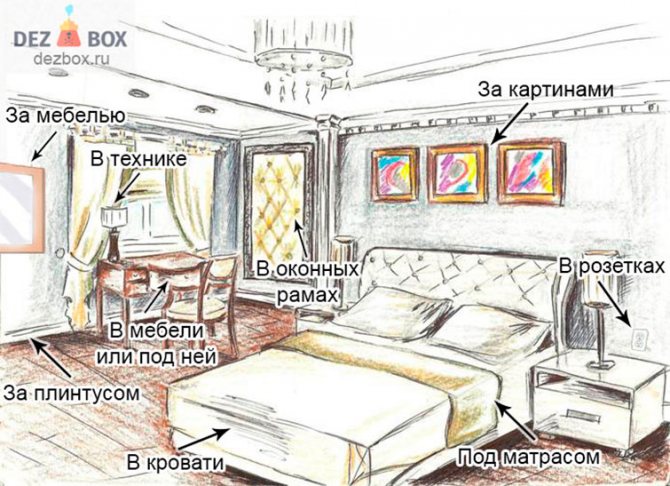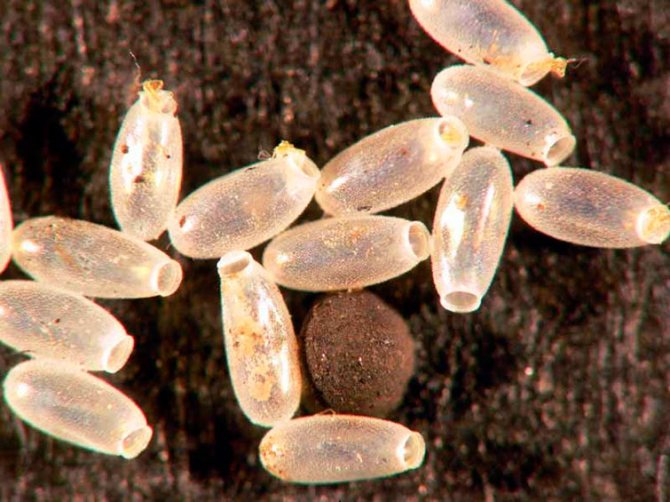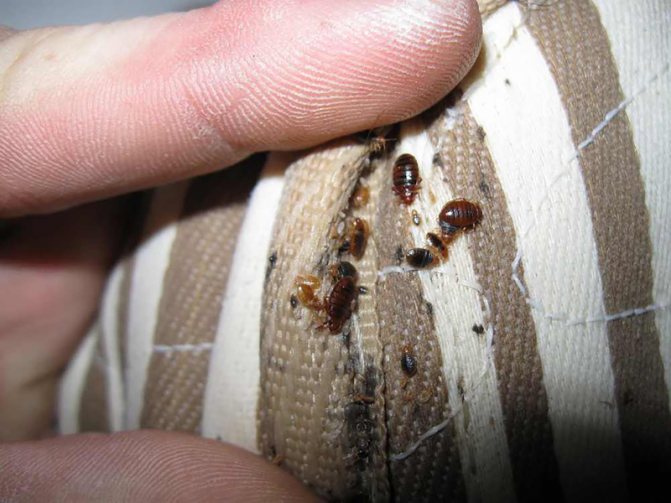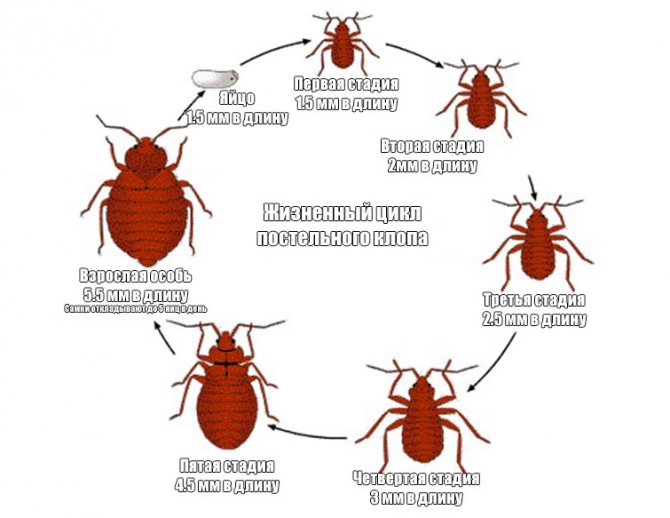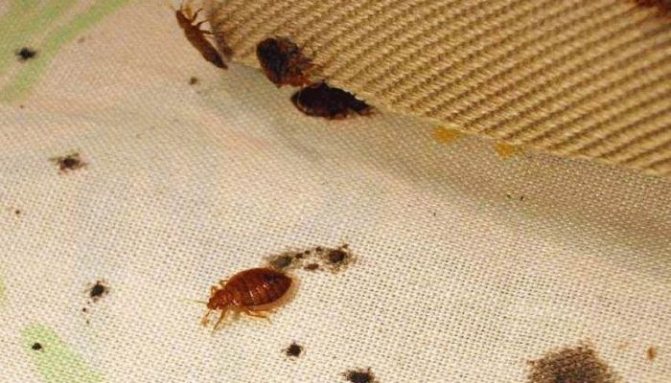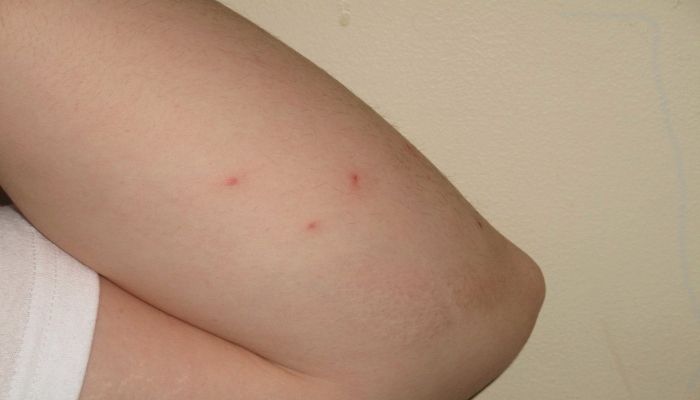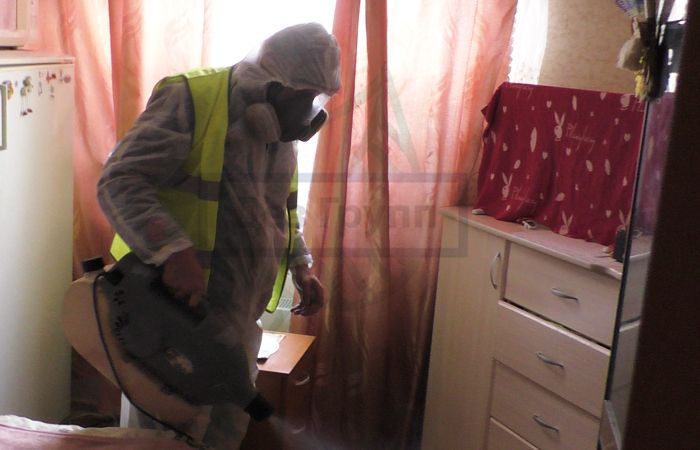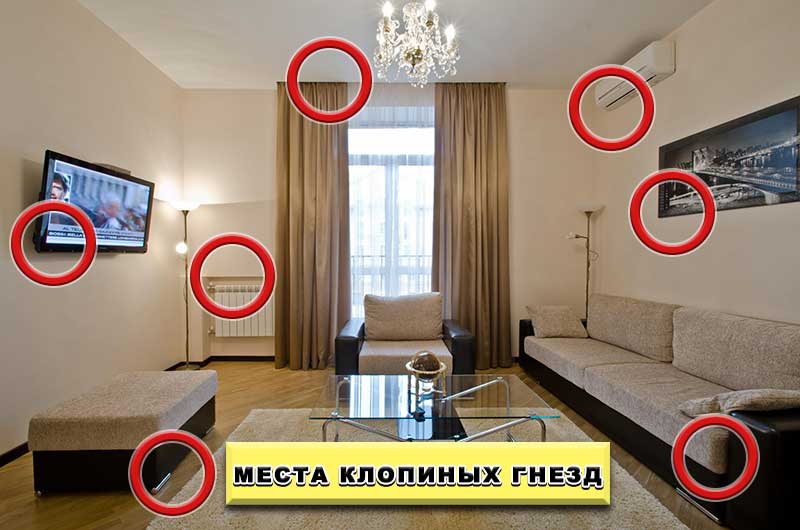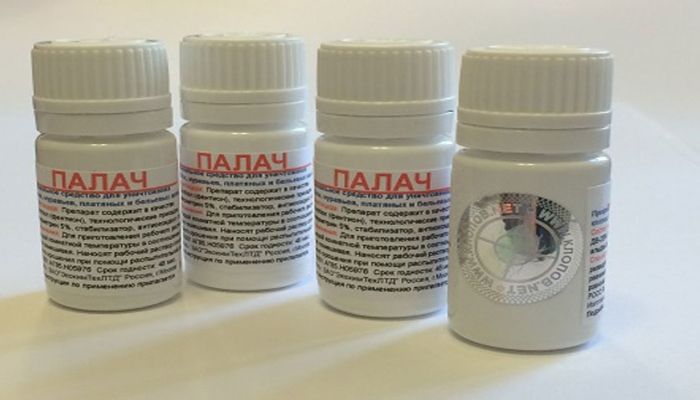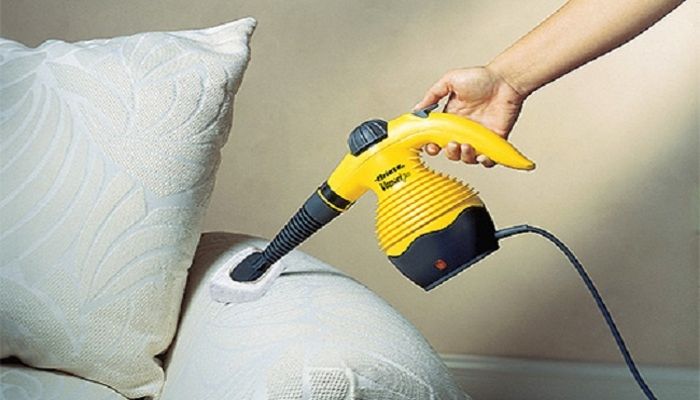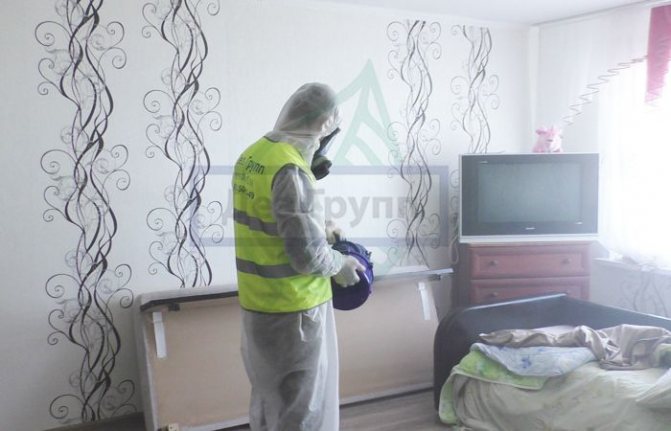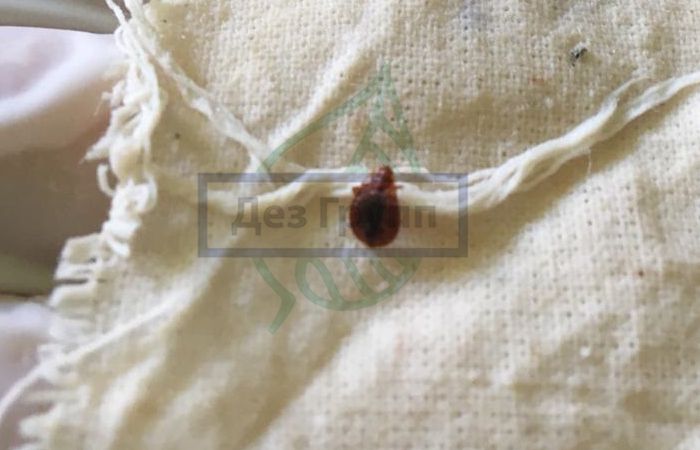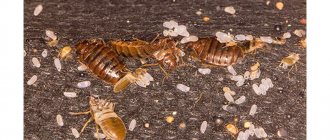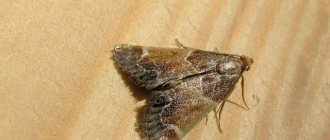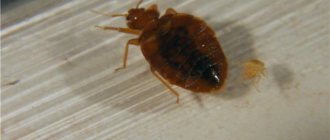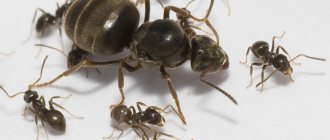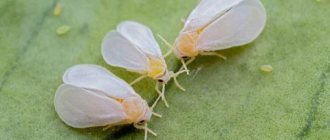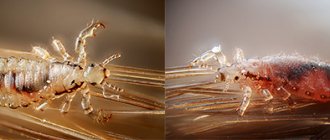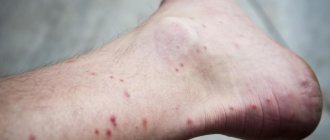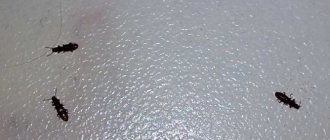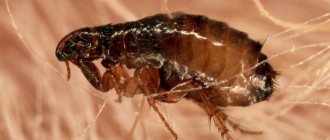A person is used to considering himself the crown of nature and forgets that sometimes he is not the top of the food chain. There are creatures who consider you and me only a source of nutrients and nothing more. Therefore, the question "how to get rid of bed bugs" has a practical benefit - not to allow them to drink the blood of apartment residents every night, to infect with unpleasant microorganisms.
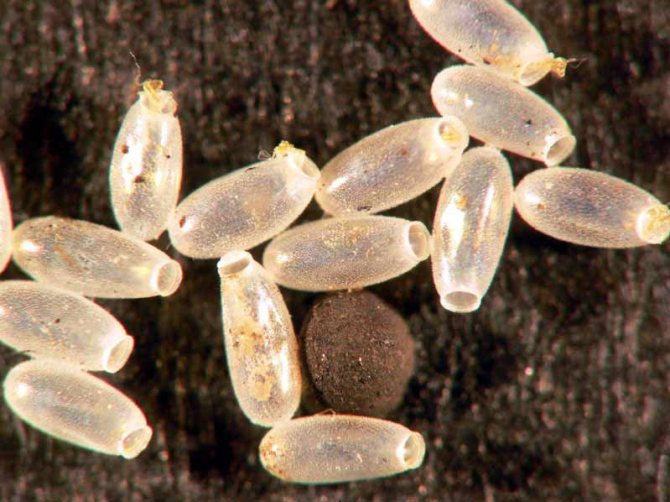
The insect has many names - both specialized and given by the common people. But they all have certain unpleasant traits in common:
- Unpleasant bite marks that attract the attention of others. In addition to the appearance, they deliver negative sensations - itching, itching;
- There is a possibility of "picking up" any disease carried by a domestic pest;
- A strong characteristic smell quickly develops in the house, indicating the presence of a colony. Dead parasites ooze it too;
- The high reproduction rate makes it dangerous for even several representatives of the species to enter the premises. In 2 months, even under unfavorable conditions, the number increases by an order of magnitude;
- Their small size and constant movement make them difficult to detect and destroy. They are able to hide in furniture, bedding, small cracks, appliances. Eggs can be laid on vertical surfaces as well.
An article was previously published on how to destroy bedbugs in a sofa and other furniture. Now we will separately dwell on getting rid of eggs (how to destroy bedbug eggs) with larvae (nymphs) that have not yet hatched.
What do bedbug eggs look like, photo
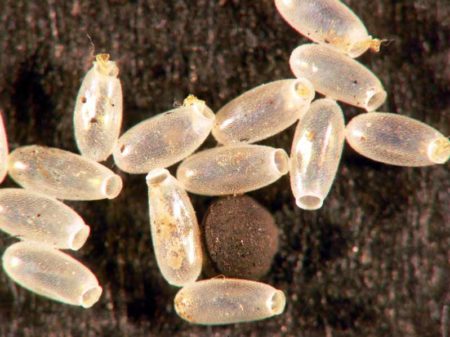

Bedbug eggs are very small, the length of the eggs does not exceed 1-1.5 mm. That is why it is quite difficult to find a bug's nest, especially if it is located in a hidden place, like the upholstery of upholstered furniture or the foam underside of a mattress. Insect eggs often go unnoticed and are not destroyed when processing a room with adults. Since the eggs of bloodsuckers are less susceptible to the chemicals used in pest control than the bugs themselves, this often becomes the reason for re-infestation of the premises, after a certain time after insecticide treatment.
When visualizing, you can clearly see what the eggs of bedbugs look like, which will help to quickly recognize and destroy them, thus increasing the effectiveness of the disinfestation performed.
The bug's eggs are oval in shape and resemble rice. They are translucent, pearl white in color. At one end, they have a specific convex lid, which is easily broken by the reflected bug larva.
If left lying for a long time, eggs may acquire a yellowish tint. Due to a special adhesive secret, they are tightly adhered to the surface on which they were laid. Eggs are easily held even on a vertical surface, in most cases they are collected in piles of 5-10 pieces. Sometimes there are also large clutches.
Sometimes bedbug eggs are confused with their feces, which are small, dark balls. The black color of bed bug feces is due to the large amount of iron in the digested blood. Insect excrement stains wallpaper, light-colored furniture.
In the photo you can see an enlarged picture of the eggs of the bugs, which allows you to recognize and distinguish the eggs of the insect from its excrement.
Where do bed bugs lay their eggs - how to spot bed bug eggs?
Bedbug clutches are mainly found in their habitats during the daytime. Bedbugs prefer dark, secluded, dry and well-protected areas close to a food source, that is, places where people sleep. Small and not very fast larvae begin to feed immediately after degeneration, and therefore the adults attach particular importance to the place of placement.
Basically, masonry is located under mattresses, inside upholstered furniture, under wallpaper peeled off from the walls and under paintings, between walls and baseboards next to the bed. To be sure to find the eggs of bedbugs, you first need to inspect these areas in the apartment.
Now reading: What to choose poison from bedbugs - how much will the treatment cost, where to buy
Female bugs make several clutches far enough from each other so that if the offspring die in one of them, the rest have time to hatch and remain unharmed. The destruction of one nest cannot be a guarantee of the complete extermination of their entire population. It is necessary to carefully examine all potential masonry sites, which will help solve the problem once and for all.
Effective remedies
Since most of the substances have no effect on the clutch left by an adult, it is necessary to repeat the treatment several times. We advise you to do this every 2 weeks, since the nymphs ripen for about 5-7 days. At the time of the new pest control, larvae that are not destroyed due to being inside the egg will become vulnerable to chemicals or other means.
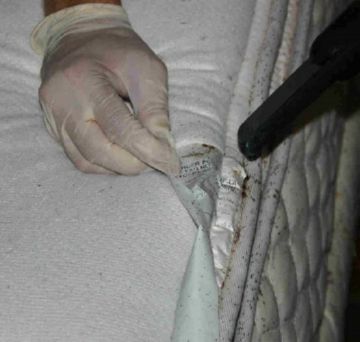

How to kill bed bug eggs:
- Heat treatment. It implies both exposure to steam (boiling water) and freezing the apartment in winter. In the first case, be careful not to get burned or damage the upholstered furniture. It is better to determine in advance the locations of insects and purposefully spray them until the water has cooled down;
- Mechanical destruction - if you discovered the masonry yourself. Due to its small size, this is not always possible. Sometimes there are several clusters of eggs in an apartment, so check all the rooms carefully;
- Sprays are an ineffective method, but they can be used for prophylaxis. Manufacturers often advertise it as an insect repellent at any stage of evolution, but this is not the case.
Taking protective measures will help prevent bloodsuckers from entering your home. You don't have to think about how to get rid of bed bug eggs. Eliminate the ways of their penetration inside, wash clothes after a country trip, spending the night in a dubious place, inspect furniture brought from somewhere - even new.
How many days do egg bugs hatch?
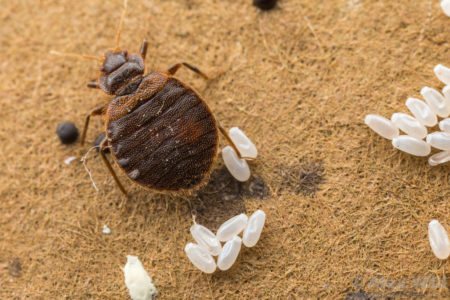

The temperature regime in the room where they ripen has an important effect on the development of bedbug larvae. The optimum temperature for insects is from 20 to 35 degrees. Under favorable conditions, the larvae degenerate on the 5-25th day after laying the eggs. Non-simultaneous hatching is aimed at preserving part of the population even in the event of the death of several larvae. The female lays eggs throughout the year. If the temperature in the room is below 20 degrees, then the development of the larvae slows down and hatching occurs much later.
It takes 30–90 days for the larva to develop to the state of an adult insect.
Favorable conditions for breeding
Any living space where there are warm-blooded creatures (people or animals) is an excellent place for bugs to live and reproduce. Everything is very simple: there is food (the blood of the inhabitants of an apartment or house) and a comfortable temperature is maintained.
Reproduction of parasites occurs with the help of traumatic insemination. The male pierces the abdomen of the female, where it injects its sperm. After 5 hours, the fertilized insect is ready to lay eggs. In just 1 day, the female is able to lay a clutch of up to 12 eggs in total, and in her entire life she produces up to 500 eggs.
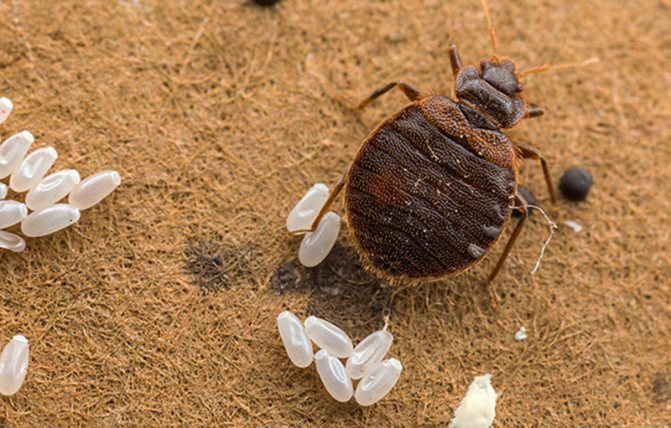

As mentioned above, bed bugs need favorable conditions to replenish the population. These include:
- the average temperature in the room, which does not change for a long time (insects do not tolerate a drop to -10 ° C and an increase from + 45 ° C);
- a suitable temperature for the development of eggs and larvae - best of all, nymphs (still developing immature individuals) grow at from + 20 ° С to + 35 ° С. If the temperature drops below the specified mark, then the development is slower.
The appearance of the larvae occurs on the 5-25th day. Temperature plays an important role in the hatching rate. If it is optimal, then the release of eggs is faster, and the formation of parasites into an adult individual (usually this takes from 30 to 90 days).
If you suspect the presence of bed bugs in the room, it is important to destroy not only adult insects, but also eggs, blood-sucking larvae. For these purposes, the owner of the premises will need to know the nuances of the reproduction of individuals, how they look, their lifestyle and habitat
How many bed bugs hatch from one egg?
Bedbugs mate in a traumatic way. The female does not have external genital organs, so the male pierces the wall of the abdominal cavity and injects seminal fluid there. It is stored in a special compartment and is used as needed. To create new clutches, females no longer need a sexual partner; they use the reserves of seminal fluid stored inside their body. At the posterior end of the body, the female has an ovipositor, where eggs are formed within 5 days. After the female begins to lay up to 12 future individuals per day. And in her entire life, she lays from 300 to 500 eggs. The reproduction rate and fertility of insects depends on temperature factors and adequate nutrition. One meal can enable the female to lay up to 20 eggs after 2 days.
Usually eggs are laid in clutches of 5-12 eggs, one embryo is located in one egg.
What are bed bug eggs and larvae?
Bed bugs are quite prolific insects. The female, the total life span of which lasts from six months to 14 months, can lay up to 500 eggs during this time. During the period of development, the insect goes through three stages:
- The first stage is the egg. The larva can hatch from the clutch both in one week and in a month. The ripening rate mainly depends on the ambient temperature.
- The second stage is the larva, which reaches the appearance of an adult in about a month. During this time, bedbug larvae change their chitinous membrane about five times.
- The last stage is an adult or imago that can live and reproduce for one year or more.
Bedbug eggs in the photo resemble elongated rice grains, their color is whitish, and their shape is slightly curved. If you look closely, you can see a small lid from one end, through which the larva then emerges. In one clutch, up to 5 eggs are usually found, less often a little more. The female bug does not lay her offspring in one place and thereby increases the chances of their survival - it is almost impossible to destroy all the clutches at one time. Bedbug eggs are endowed with one more feature - there is a sticky secret on their surface, thanks to which they are easily held on any horizontal and vertical surface.
At temperatures within ten degrees, further development stops, in this state the eggs of bedbugs can be up to one and a half months.
Do not think that bedbug eggs can only be found and then destroyed in beds, mattresses, beds or sofas. Bedbugs can leave their offspring where there are appropriate conditions, which include:
- Temperatures up to 27 degrees Celsius.
- Normal humidity level.
- A certain value is also assigned to secrecy from a person.
That is, we can say that these bugs are able to find places where their offspring are found in the last turn. A clutch of several eggs can be seen under the baseboards, in bedside tables, within paintings and photographs, in cornices, under rugs. Bedbugs especially love to leave their future offspring on woolen things, and therefore eggs can often be seen in the folds of outerwear, which is not entirely pleasant to agree. Bedbug larvae live and hide in the same place as adults, but it is more difficult to notice them by the light chitinous cover. Having hatched from eggs, the larvae almost immediately begin to lead the lifestyle of an adult.
What do bed bug larvae look like?
Bedbug larvae have a structure and appearance similar to that of adults. The difference is the specificity of size and activity. The larvae are small at the time of hatching from the eggs, their size does not exceed 1.5 mm.
The chitinous cover is soft, transparent, when feeding, you can clearly see the blood filling the insect's digestive system. The bodies of the larvae are flattened from top to bottom and somewhat more elongated than in the adult.
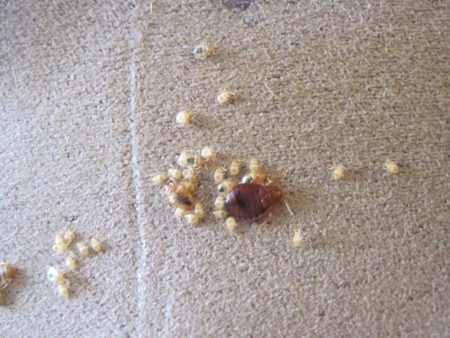

The larvae move slowly and live close to the food source. For the transition to the next phase of development, the larva must feed. A nymph can shed and grow in size only with good nutrition. By 4-5 molting, it becomes 3 times larger than the initial size and reaches a size of 4.5 mm. The larva turned into an imago begins to change the color of the chitinous cover, which turns dark brown.
Now reading: Destruction of bedbugs - a selection of effective methods of struggle
Nymphs go through 5 molts and then become adult bugs, without undergoing morphological changes, on the basis of which the development cycle is considered incomplete.
Physiological features
The bed bug larva have the following physiological differences from the mature individual:
OUR READERS RECOMMEND!
In the fight against bedbugs, our readers advise the Pest-Reject repeller. Electromagnetic and ultrasonic technology is 100% effective against bugs, cockroaches and other insects. Absolutely safe, ecological product for humans and pets.
- 1 Inability to reproduce;
- 2 Smaller size;
- 3 Other shade of color;
- 4 Less mobility (slowness) of the insect;
- 5 The need for constant nutrition;
- 6 Great sensitivity to temperature.
Only after hatching from an egg, the larvae of bedbugs (nymphs) already look like a reduced copy of a mature individual. The shape of the body is flattened and elongated, slightly more oblong than the body of an adult insect. The size of the larva varies from 1.5 to 4.5 mm, depending on the stage of development.
The small size of the body of the larva also affects its speed of movement. They move very slowly and are able to overcome about 25 cm per minute. For this reason, the bed bug larva often lives near the feeding site.
They are also more demanding on the temperature regime than adults. If the ambient temperature is lower than necessary, the development of the nymph will take longer. In some cases, bedbug larvae may die, while adults in the same conditions will survive and give new offspring.
The difference between a nymph and a sexually mature insect lies in the color of the body. The color ranges from almost transparent in newly hatched individuals to brown in larvae at the last stage of development. As developmental stages change, the bed bug larva acquires a darker color, characteristic of an adult.
At what temperature do bed bugs and their eggs die?
For life, bedbugs need food and favorable climatic conditions (+ 20-30). In the presence of these conditions, bugs actively reproduce. At high temperatures, the reproduction process is accelerated, the larva develops faster.
If the temperature is too high, bugs can die quickly enough. Short-term exposure to cold (below 0) is tolerated by them normally, but prolonged cold can cause the death of insects. At +15 and below, the reproduction process stops, the larva freezes in development.
Under optimal conditions, the bug can live for about a year. When the temperature rises to 32 degrees, the development of an adult from an egg accelerates. Life expectancy is reduced by 2 months.
At temperatures from 20 to 25 degrees, bugs can live up to 15 months. At temperatures below 15 degrees Celsius, adults fall into suspended animation. Bedbugs can be in this state for about 1.5 years. The smell of blood can wake them up.
At +50 and above, bugs live no longer than 2 minutes, then die. At +45, they can live no more than 30 minutes. An egg in such temperature conditions lives up to one day.
At a temperature of -10 degrees, insects go into hibernation. At -15 and below, they will die, but on condition that such a regime persists for 3 days or longer. At -20 degrees, death will occur in a few hours. An egg in such conditions will last a maximum of 2 days.
Features of bedbugs
Bed bugs are nocturnal. During the day they sit peacefully in the cracks, and at night they go out in search of food. Bedbugs can settle anywhere - in books, in household appliances, in clothes, furniture, under wallpaper, baseboards. Wherever it is warm and dark.
These insects do not build nests, but most often they prefer to live in clusters. Usually in such places you can find dark spots of their feces, eggs and skins of larvae.
Unlike other domestic insects, bed bugs are very tenacious. In the absence of a power source, they can fall into semi-anabiosis for a long time. And in such a state to live without food and even at low temperatures. The lifespan of one individual is about a year.
Reproduction in bedbugs occurs very quickly, especially if comfortable living conditions have been created for them in the form of a warm temperature - 18 ... 25 degrees and a dark place.
The male needs to fertilize the female only once in order for her to breed for the rest of her life. Fertilization of the female occurs by the male piercing her abdomen and injecting semen.
The development of these insects is carried out according to an incomplete cycle of transformation: egg - larva - adult. In 24 hours, one female is able to lay up to 15 eggs. Larvae under favorable conditions (temperature 25 ... 27 degrees) are born in three to four days. If the temperature is lower, about 20 degrees, then the hatching process is delayed, it can last about three months.
A clutch of eggs is usually located no further than two to three meters from a person's sleeping place. Most often it is located in the corners of the sofa, in the upholstery of furniture, in the folds of fabric, under the baseboards, in sockets, that is, in places where it is difficult for a person to reach.
Bed bugs, furniture bugs, or just house bugs are one and the same species. They are given names depending on the nesting place. If the insects had time to breed, then the clutches and eggs of bedbugs can be found in almost any nook and cranny.
The main reasons for the appearance of pests:
- Transfer from the hotel, hostel. Insects hide in luggage and travel with humans.
- Purchase of furniture, especially used furniture.
- From neighbors - one infected apartment is enough and very soon everyone will find bugs in the apartment.
- Sometimes pests travel on clothes and shoes. Moreover, the carriers may not even know what kind of surprise they brought with them.
Before processing, you will need to find the nests. The resettlement of insects in an apartment is subject to certain rules:
- They settle closer to the bed - they feed on blood and hunt at night.
- They equip nests in hard-to-reach places.
- They love warmth very much.
Most often, bedbugs in an apartment can be found directly in furniture, behind wallpaper, behind baseboards or in cracks next to a radiator. You need to look carefully - the insects are small, and their eggs are even smaller.
But how to understand that it is the bugs that have started up, and not other insects?
There are a number of characteristic features:
- Residents develop skin bites. Most often they are noticed in the morning. The bites are typical - a path of several red dots.
- Small spots of blood appear on the bedding.
- Black spots are visible next to the bed and on the bedding, crumbs are traces of the vital activity of insects.
- Near the nests, skins are visible, which are shed by larvae.
Immediately after identifying bed bugs in the apartment, you need to start destruction. You can kill bedbugs yourself - it is not necessary to call a team of exterminators. Specialists will be required only if the infection occurred in an apartment building, and there is no way to cope on your own.
A characteristic feature of bedbugs is the so-called traumatic fertilization. To fertilize the female, the male bed bug pierces her shell and injects semen inside the abdomen. Spermatozoa are stored in the organ of Berlese throughout the female's life - up to one and a half years. Males are promiscuous in their sexual preferences: they can mate up to two hundred times a day, and attack not only females, but also other males, and even insects of a different species, for example, cockroaches.
REFERENCE: A bug inseminated by another male, when mating, transfers to a female not only its own, but also other people's spermatozoa that have entered its body. This contributes to the preservation of genetic diversity in the event that the female is in a new place where there are no other males.
Thus, a single fertilized female can become the founder of a new colony if she finds herself in favorable conditions. To lay eggs, you first need regular nutrition. One feeding is enough for the female to lay about 20 eggs in the next two days, and in all her life she is able to produce 200-500 eggs.
Means that destroy adult bedbugs
For the destruction of adult bedbugs, a fairly large selection of chemicals in various forms is offered.
Popular and highly effective products include:


- Executioner... The drug affects the nervous system of the insect, paralyzing it. The product is harmless to the human body, however, its disadvantage is an unpleasant and persistent odor. When using this tool, you must observe safety measures, wear rubber gloves, a mask, glasses.
- Clopoveron... The drug contains the strongest poison and is able to kill bedbugs, instantly paralyzing them. The insecticidal agent has a prolonged effect, no re-treatment is required. It is produced in the form of a powder, which is poured in the usual way, or in a form diluted in water. Treatment must be carried out with a mask and gloves.
- Insecticide... The preparation contains a toxic substance of the pyrethroidone group. The drug destroys insects by paralyzing them. It has a specific smell and comes in a convenient spray bottle.
All of these agents have a detrimental effect on adult insects, however, they cannot destroy the eggs of parasites.
Egg killing agents
If, after disinfection, the eggs of the parasites remain unharmed, after a while the problem of infestation by bedbugs will again bother the owners of the apartment, where the chemical treatment was recently carried out. Eggs are quite resistant to external aggressive factors and insecticides, and they need to be dealt with with special agents that belong to the group of organophosphates that poison both adult bugs and their eggs.
Now reading: How to quickly destroy bedbugs in an apartment
These tools include:
- Diazinon... It is a versatile preparation that is often used for professional treatment of premises. The tool is not sold in the public domain, since it is a strong poisonous drug.
- Karbofos... The tool is capable of destroying adults, as well as larvae with eggs, from the first use. It has a persistent odor, so you need to air the room for a long time after use.
- Chlorophos... The product is available in powder form. Destroys adults, larvae and eggs of bed bugs.
- Chlorpyrifos... Paralyzes the nervous system of adult bedbugs. Destructive for eggs and insect larvae.
Bed bug lifestyle
The bug leads a parasitic nocturnal lifestyle, feeding on the blood of both females and males with larvae. The main time for an attack on a sleeping person or pet is 3-8 o'clock in the morning. During the day, these insects hide in the mattress, under the wallpaper, behind the baseboards, in books, in clothes and in bed. During the day they come out extremely rarely, only in case of severe hunger. They are able to move from one room to another through ventilation systems, as well as along the walls both inside and outside the apartment. The speed of passage of one meter for an adult bug is 1 minute.
Bedbugs have a well-developed sense of smell, this helps them in finding a victim and a place of shelter. For example, they may smell the clothes you wear most often, such as a dressing gown, and hide in it.
An adult can drink up to 7 mg of blood at a time, and a larva can drink less than 1 mg. They feed on parasites about once a week. If a person is not around, they can bite cats, dogs, rodents and even birds.
How long do bed bugs live?
The average lifespan of a bed bug is 1 year. In extreme situations, for example, in the case of a sharp cold snap or a person leaving the apartment for a long time, they can fall into a state of hibernation and spend more than a year in it.
Temperature at which bugs and their clutch die instantly: + 50 +С.
Traditional methods
Sometimes problems arise with the use of chemicals to kill bed bugs. In such cases, folk methods come to the rescue. However, such methods are effective only when the room is slightly infested with bedbugs.
Mixtures from bedbugs


To destroy bedbugs, it is recommended to use a mixture of turpentine, water and kerosene. The components must be mixed in a ratio of 10: 100: 15 ml with the addition of liquid soap.
Effective are ammonia mixed with denatured alcohol and benzene (10: 150: 40), and a mixture of denatured alcohol (300 ml) with naphthalene (10 g). The components are mixed, and the resulting composition is sprayed onto problem areas of the apartment.
Cold and heat exposure
Both frost (below minus 20 degrees) and very high temperatures have a detrimental effect on bedbugs. Heat treatment of mattresses, bed linen and clothes with hot steam, iron or boiling water (70 - 80 degrees) allows you to destroy adults and even their eggs.
Plants with a pungent odor
Tansy, valerian, wild rosemary, wormwood, chamomile, calamus - all these plants have a detrimental effect on bedbugs. It is better to use them fresh, when the scent is strongest due to the essential oils contained in the herbs. But in the cold season, when it is not possible to use fresh herbs, dried plants are also suitable.
Bedbug bite
Bedbug bites are not always painful and can go unnoticed for a long time. The bloodsucker chooses the most vulnerable and open places on the human body, such as legs, arms or neck.
A bug bite can cause allergies, which is an individual reaction to toxic substances contained in insect saliva. Signs of a bug bite are swelling around the bite site, severe itching, inflammation of the skin at the puncture site, reddish spots located close to each other.
If an allergic reaction occurs at the site of the bite, the application of Fenistil gel is recommended.In severe cases, tableted antihistamines are prescribed: Suprastin, Claritin.
Compliance with hygiene standards and timely destruction of bedbugs using modern insecticides help to quickly cope with the infestation of bedbugs. If necessary, you can contact specialists and organize professional pest control, destroying both adults and their eggs and larvae.
Where do bugs come from in the house and how are they dangerous?
It is a mistake to believe that bedbugs can appear only in old Soviet apartments, where they have not been renovated for several decades. Parasites can start even in the cleanest room with new renovation and furniture. Since bedbugs have practically no natural enemies in a human dwelling, and a food source is always nearby, they feel very comfortable here.


In apartments with perfect cleanliness and high-quality repairs, bugs can also start
Bedbugs can easily penetrate apartments on any floor. Thanks to their flat body, they crawl through narrow cracks and hide in the most difficult places for humans. Bedbugs cannot fly and jump, but they can move very quickly. They climb to great heights, easily crawl along the outer walls of houses from one window to another. Bedbugs cover the distance between apartments quickly, so if they are in the apartment of one of your neighbors, they will soon appear in yours.
How bed bugs enter the house
There are practically no obstacles for the small flat body of the bug. The parasite enters the apartment as follows:
- through the cracks in the doorway;
- open windows and doors;
- ventilation holes;
- pipe and ceiling / floor joints;
- on clothes and shoes;
- with purchased furniture, especially second-hand;
- on the paws of pets, etc.
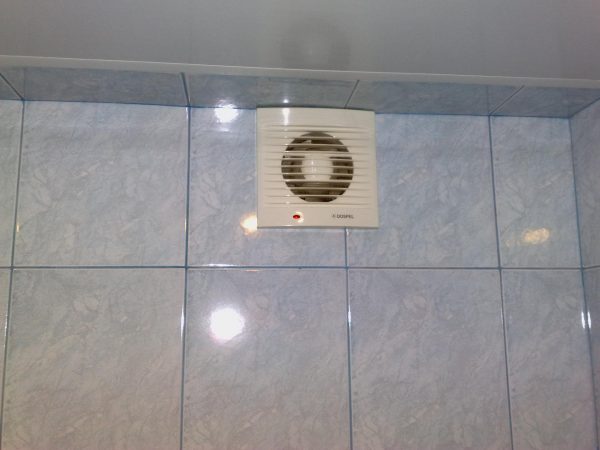

Parasites often enter your home through ventilation holes
There are a lot of ways for bedbugs to enter the apartment. This can be an infected apartment or hotel, from where several individuals of bedbugs were brought into the house on clothes or in a bag, purchased furniture, including brand new ones. Furniture warehouse often becomes a breeding ground for parasites. For thousands of years, bugs have learned to instinctively "calculate" the places that, sooner or later, will lead them to human habitation.
Why bedbugs are dangerous for humans
For humans, bedbugs do not pose a potential danger, but significantly reduce the quality of life in general. They are nocturnal, so they interfere with proper sleep. Bed bugs are activated in the second half of the night, closer to the morning, as a result of which a person does not constantly get enough sleep. In places of bites, red dots appear, which itch and heal for a long time, sometimes allergic reactions occur.
Small children are most affected by bedbug bites. The fact is that children's skin is much softer and thinner than that of an adult, and the blood vessels are located closer to the surface of the body. In addition, children are more likely to develop allergic reactions to bedbug bites: blisters may appear, and in rare cases, even Quincke's edema. The wounds are painful, itchy and heal for a long time, besides, the child is constantly trying to comb them, which can cause an infection.
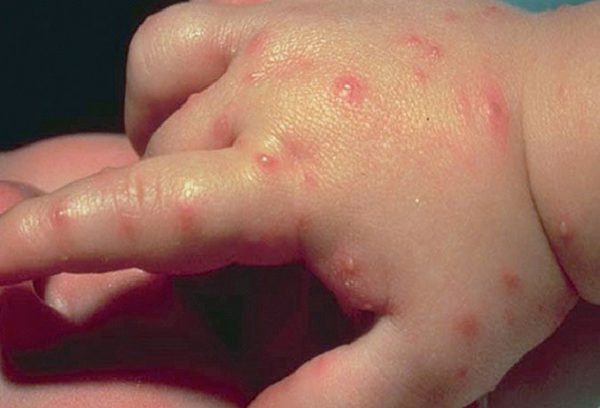

Children often develop blisters at bite sites.
Constant sleep deprivation, itching and painful sensations interfere with living fully. In especially sensitive people, parasite bites can provoke neuroses, nightmares and fear of going to bed.
Testimonials
Dear readers, you can leave your feedback on how to kill bed bugs and their eggs in the comments, your opinion will be useful to other users of the site!


Hope
I fought with bedbugs according to the old methods, that is, she treated baseboards and other places of their habitat with boiling water. After a while, they became active again.I consulted with experts, they explained that it was necessary to destroy both adult bugs and their eggs. Disinfection was carried out, thanks to which the house was completely rid of parasites.
Regina
It was possible to get rid of bedbugs using the drug Chlorophos. A very effective remedy. It destroys pests immediately, within several days it found the bodies of dead insects. Afterwards she carried out wet cleaning and vacuumed upholstered furniture. The results are good.
How to get rid of bed bugs in a car?
Bed bugs are quite tenacious insects that can settle in various places. The personal car is no exception. As a rule, parasites are brought here by the person himself. This is a big enough problem for private drivers. Therefore, regular inspection of the vehicle interior is mandatory.
You can get rid of the problem using spot treatment, various chemical and non-chemical methods. First, all secluded places are looked through, the covers are removed, the folds of the material are checked. Often places where bedbugs accumulate have an untidy smell.
If you take on the fight against parasites on your own, you can get a fairly negative result. The products used can leave an untidy smell, not destroy the eggs, which will lead to a quick resumption of the problem. Therefore, a proven pest control service should solve the problem.
Our specialists are ready to take on an object of any complexity. We sign a contract so that our clients have no doubts about our professionalism.


